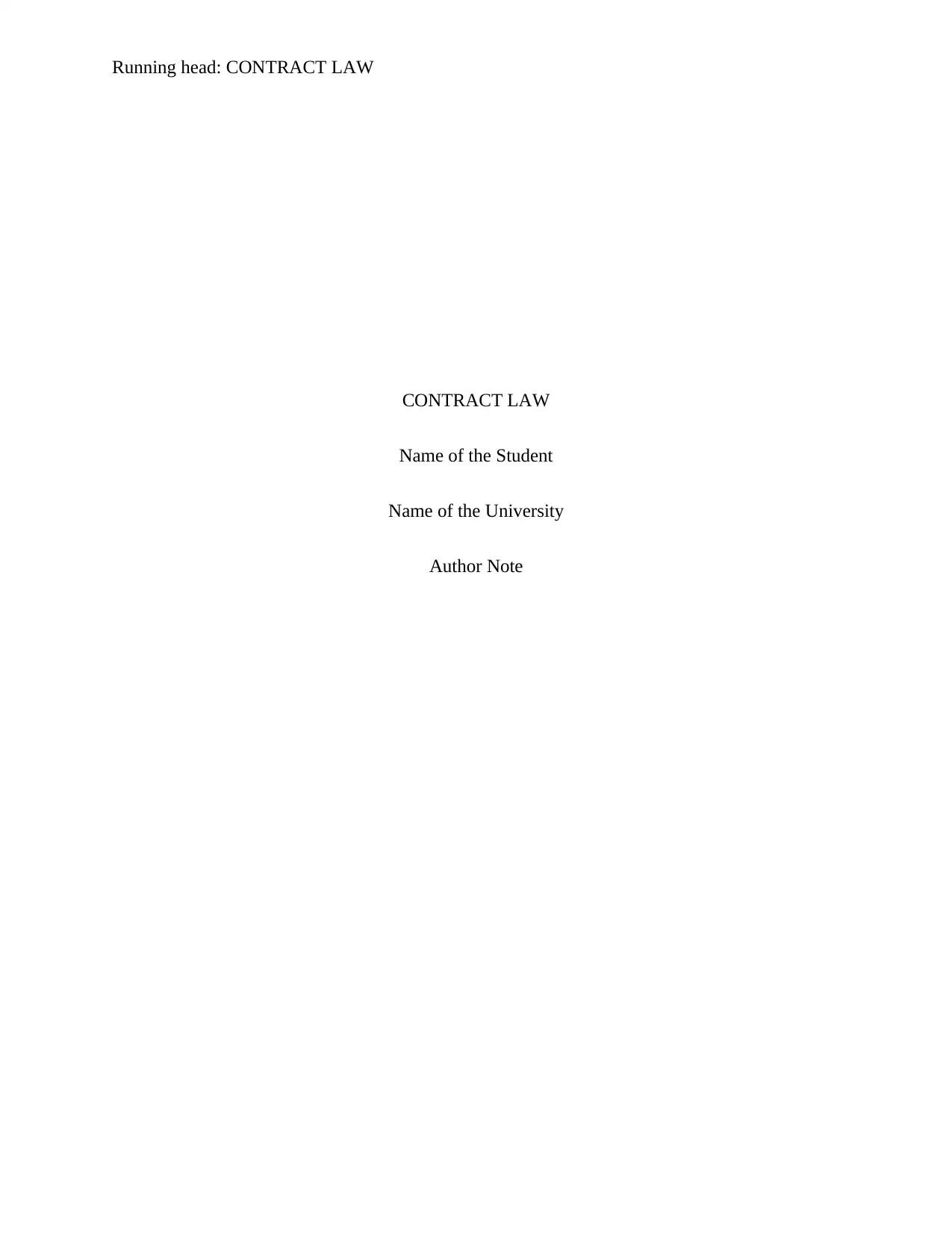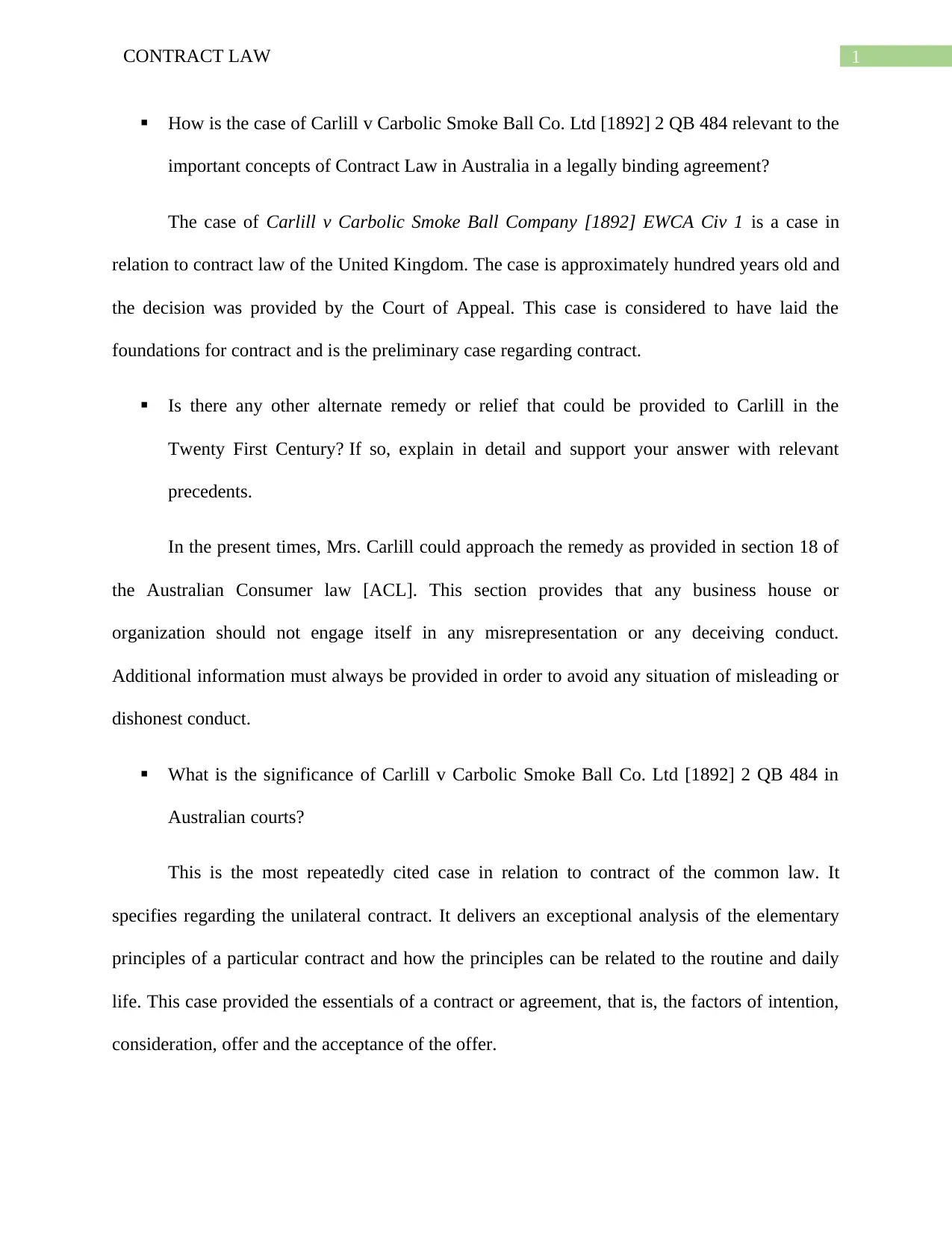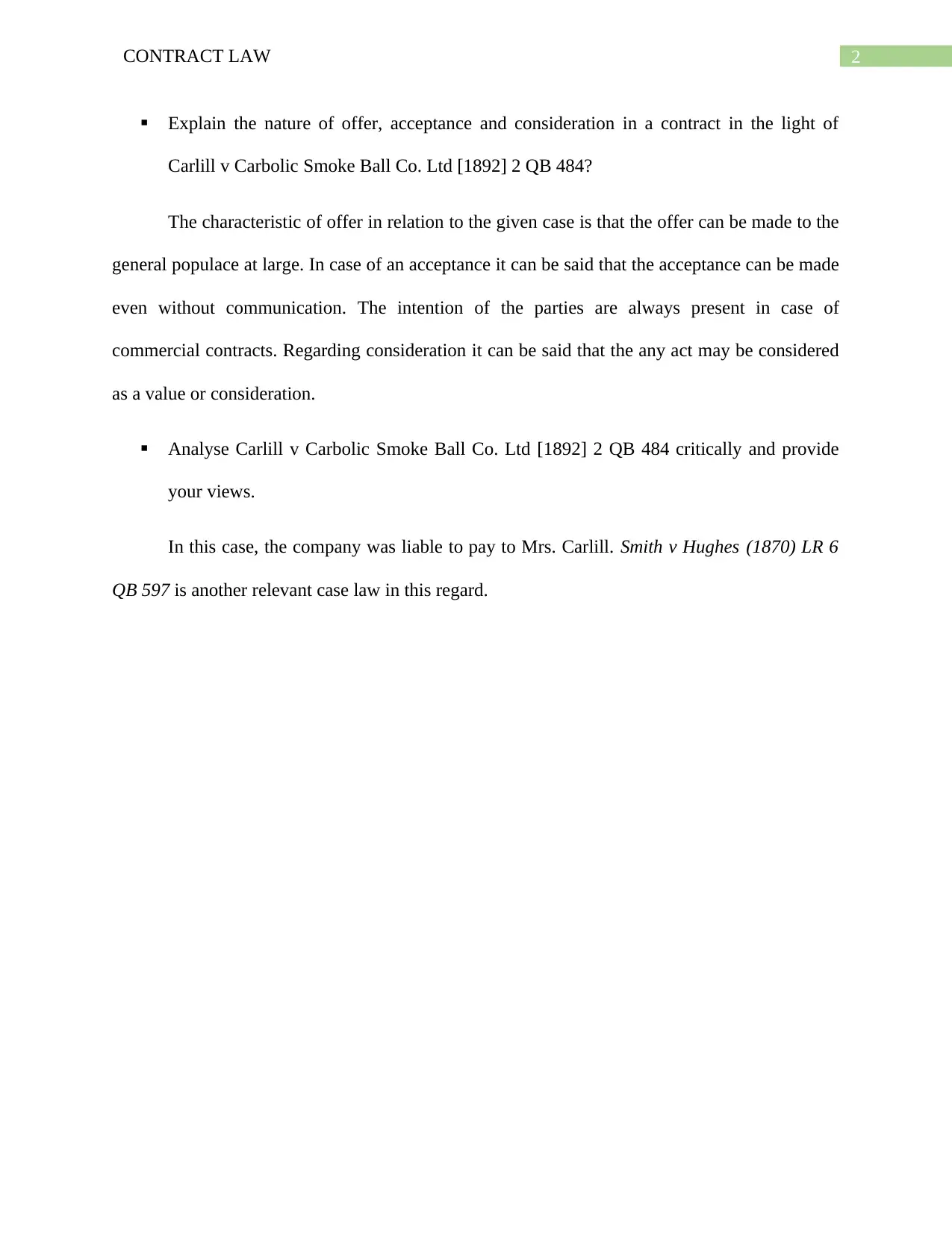Contract Law: Carlill v Carbolic Smoke Ball Co. Case Study
VerifiedAdded on 2022/11/02
|4
|506
|340
Case Study
AI Summary
This assignment analyzes the landmark case of Carlill v Carbolic Smoke Ball Co. Ltd [1892] 2 QB 484, focusing on its significance within the context of Australian contract law. The analysis covers the case's relevance to key contract law concepts, including legally binding agreements, the nature of offer and acceptance, and the role of consideration. It explores how the case has shaped the understanding of unilateral contracts and the intention to create legal relations. The assignment also examines potential alternative remedies available to Mrs. Carlill in the modern legal landscape, referencing the Australian Consumer Law (ACL) and related precedents. Furthermore, it assesses the lasting impact of Carlill v Carbolic Smoke Ball in Australian courts and provides a critical evaluation of the case, supported by relevant case law such as Smith v Hughes (1870) LR 6 QB 597. The analysis highlights the foundational principles established by the case and their continuing relevance in contemporary contract law practice.
1 out of 4










![[object Object]](/_next/static/media/star-bottom.7253800d.svg)